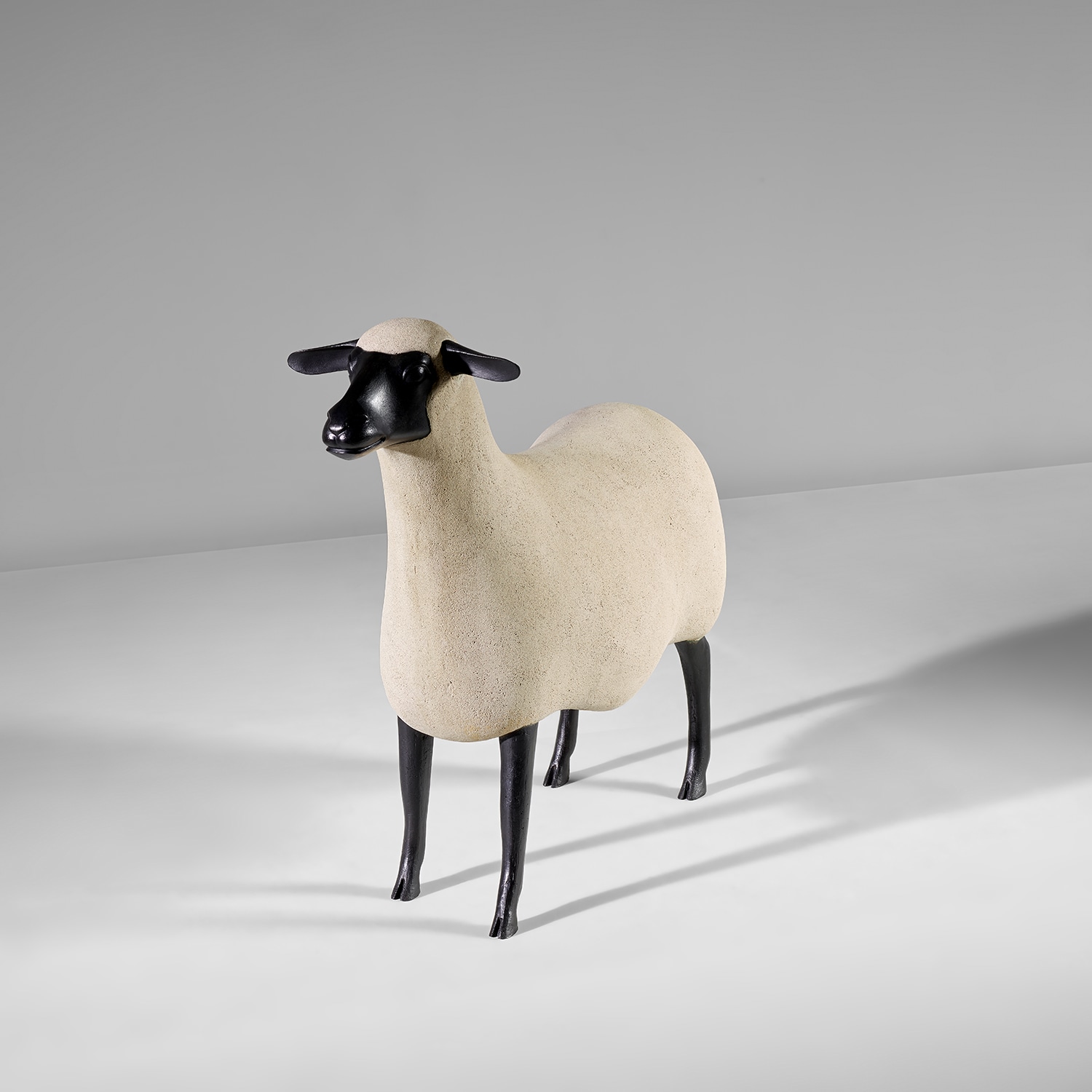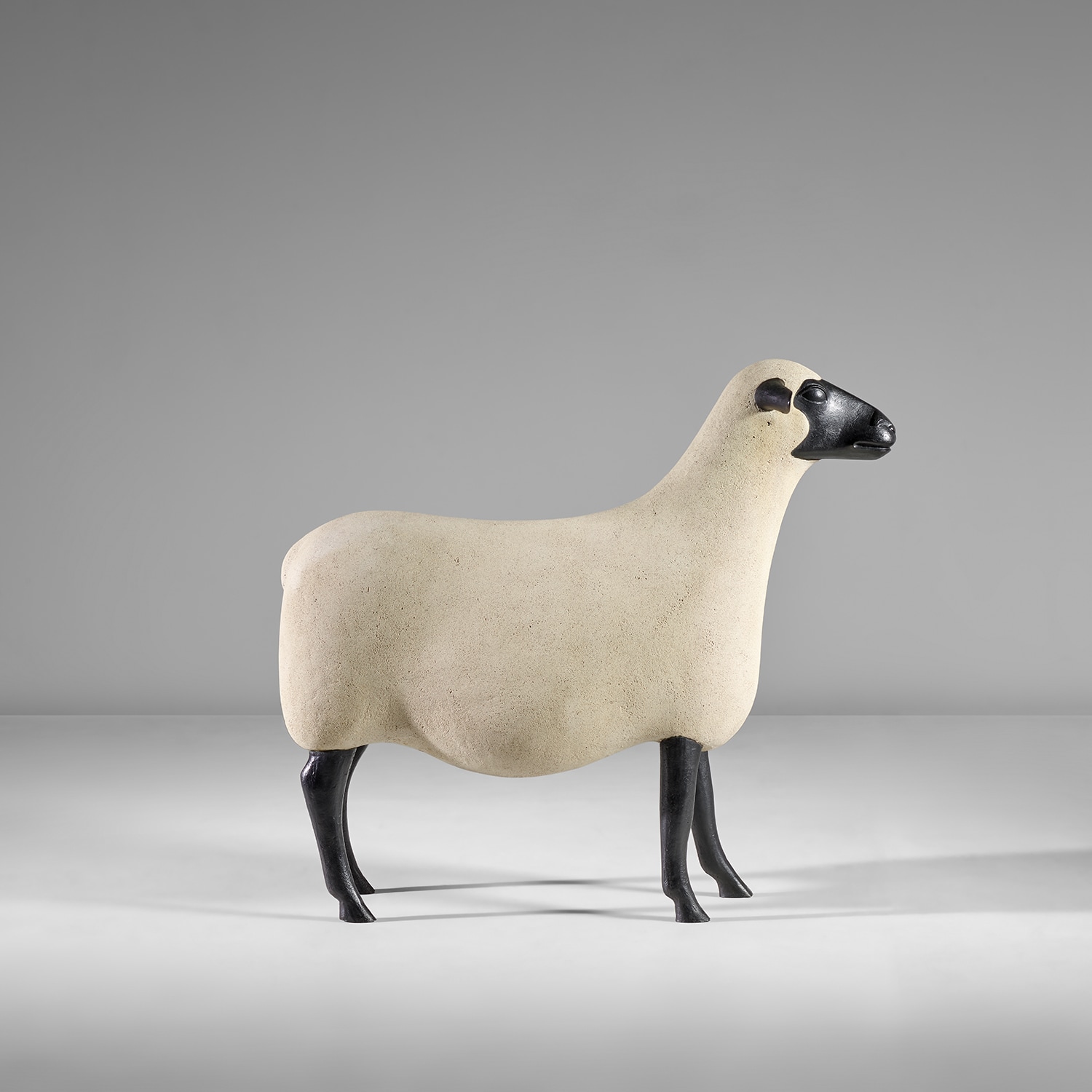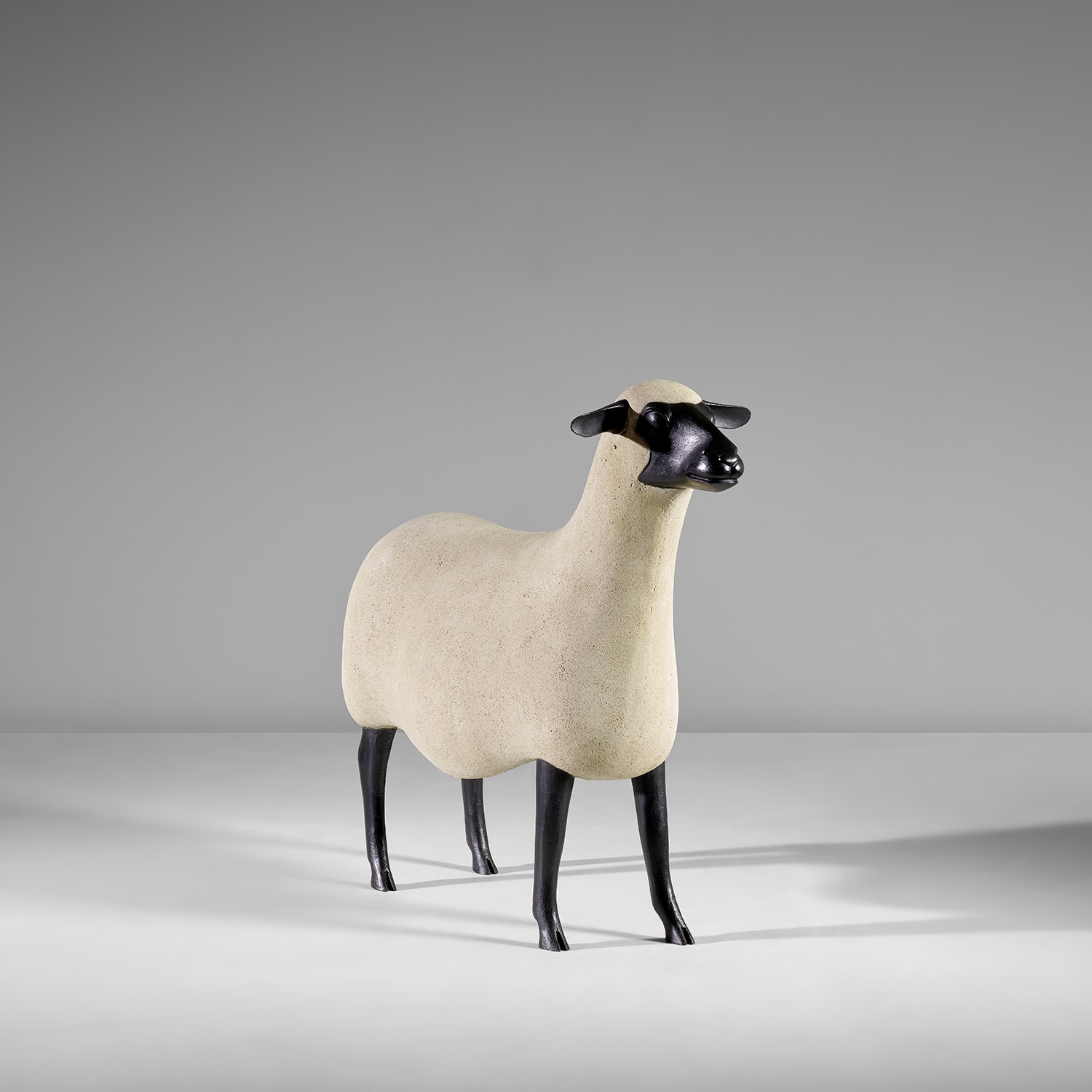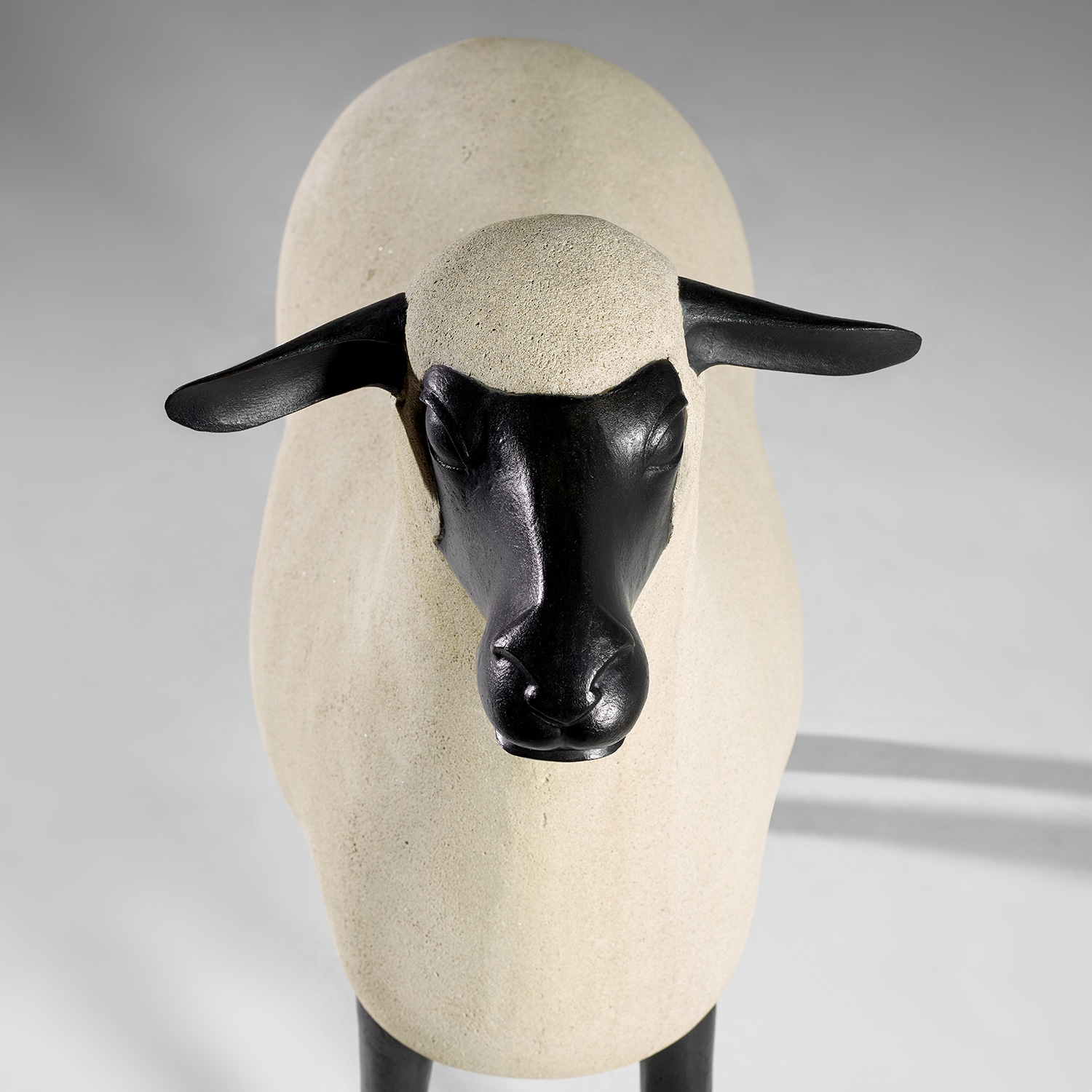













2
François-Xavier Lalanne
'Brebis', from the 'Nouveaux Moutons' series
1994
Epoxy stone, patinated bronze.
90.3 x 35 x 101 cm (35 1/2 x 13 3/4 x 39 3/4 in.)
Produced by Fonderie Blanchet-Landowski, Bagnolet, France. Number 25 from the edition of 250. Underside of muzzle impressed Fondeur Blanchet 25 / 250/1994.